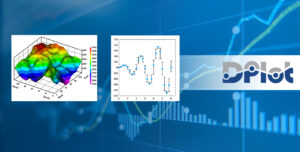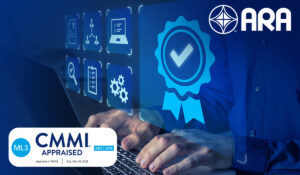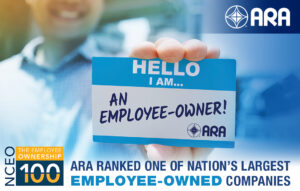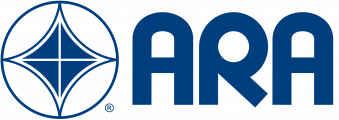ARA offers training in its state-of-the-art RF measurement facility
Several years ago, engineers and scientists at ARA noticed a chilling trend: many trade schools, colleges and universities were no longer offering advanced degrees or training programs for engineers and technicians who would operate and maintain legacy and new technology systems used in the design, development, testing and measurement of antennas and radomes, radar and more.
Very few current university engineering programs offer concentrations in electromagnetics and radio frequency (RF) design and analysis. In previous years, universities had several classes in radar systems, computational electromagnetics (CEM), advanced frequency selective surface (FSS) designs and scattering analysis. Today, these same schools offer little, if any, advanced degree programs in these areas, and training for engineers had become more theoretical, with less emphasis on hands-on experience.
“THE UNITED STATES IS AT A CROSSROADS IF IT INTENDS TO MAINTAIN ITS MILITARY AND TECHNOLOGY LEADERSHIP. UNIVERSITIES ARE NO LONGER SUPPORTING OR OFFERING CLASSES IN THESE AREAS. INDUSTRY NEEDS TO TAKE UP THE MANTEL. ARA IS MEETING THESE NEEDS!” – EDWARD URBANIK, RF TECHNOLOGIES GROUP LEADER
Concerned about the aging work force and the lack of trained engineers and scientists following in their footsteps, ARA is taking steps to address these deficiencies, developing training courses aimed at high school students, college students, and professionals.
They have actively participated in boot camps and short courses offered during the Antenna Measurement Techniques Association (AMTA) meeting and symposium, giving tutorials at AMTA meetings and regional events. AMTA is the international organization dedicated to development, application, and dissemination of advanced antenna, radar signature, and related measurement technologies.
As part of the effort to secure the future of the field, one implementation offered under this program is their High School Technology Immersion Program (TIP).
For most high school students, spring break is a time for relaxing with friends away from the demands of school and schedules. For three students at the Miami Valley School in Dayton, OH, spring break was spent gaining exposure to the essential elements of radar cross section measurements, antenna measurements and material characterization.
Each day began with one hour of lecture given by ARA’s Hirsch Chizever, senior technical advisor and 30-year veteran of radar cross section, antenna, and material measurements. The students were given a packet of notes for the day’s activities guided by the answers to three questions: What do we want? How do we get it? What does it mean? This focused time of theory, practice and analysis was followed by three hours of practicum in ARA’s own state-of-the-art RF measurement facility. The students were then led through a series of group measurement activities where they developed skills in operating RF measurement equipment and interacting with their data.
At the end of each day, the students were given a homework assignment encouraging them to use MATLAB on their own computers using ARA software to further analyze the data they had measured that day.
ARA is now planning the next immersion experience and looks forward to expanding the program to include engineering and science professionals seeking to bolster their understanding of RF measurements. For established engineers who want to change careers, or those who are working in the field but want a better grasp of theory and practice, ARA is working on a short course curriculum to meet that need.
ARA currently has one complete course developed by Brian Kent, ARA senior technical advisor and retired chief scientist of the Air Force Research Laboratory. The course offers an introductory program into signature engineering, describing the need for stealth, the science behind the technology, and rudimentary methods for controlling signature.
The course was developed with help from the DoD’s Defense Manufacturing Assistance Program (DMAP) conducted through the State of Ohio.
Introductory in nature, this class is a stepping stone for other classes that ARA plans to develop to cover topics including Frequency Selective Surfaces (design and fabrication), computational electromagnetics, basic electronic warfare, and the science behind electromagnetic measurements.
ARA plans to use its compact range and material measurement capability as a laboratory for the hands-on portion of the class, much like the High School immersion program.
Contact
Edward Urbanik
eurbanik@ara.com
937-435-1016




